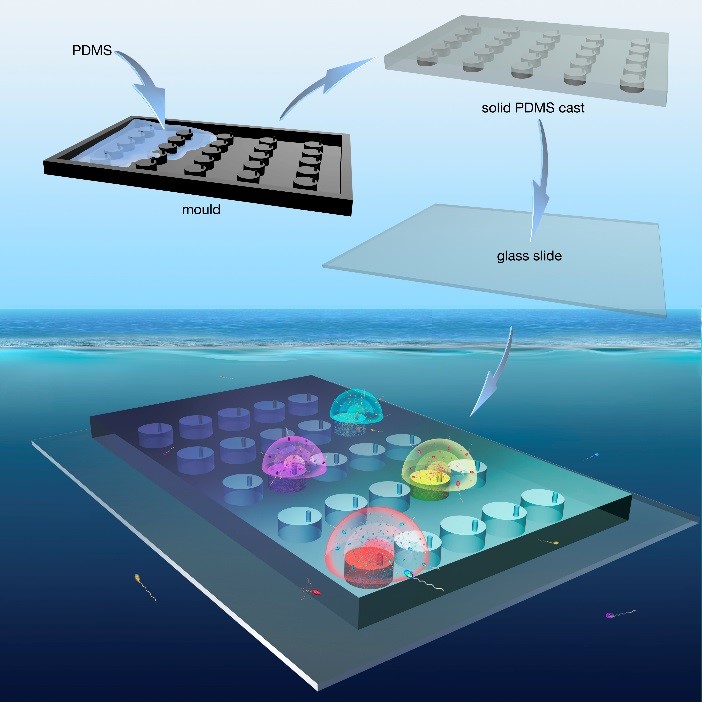In situ microtechnology
Written By
Category
Research
Posted On
April 1, 2012
Share This

Microbial behaviors influence the productivity and biogeochemistry of the ocean, yet they occur in minuscule volumes that cannot be sampled by traditional oceanographic sampling techniques. In particular, many marine microorganisms use chemotaxis to exploit ephemeral nutrient patches or to reside within the phycosphere, where exchange of nutrients and signaling molecules provides a favorable microenvironment. As a result of a methodological gap, most of our knowledge concerning the mechanisms underlying these interactions is derived from laboratory-based experiments. To bridge this gap, we leverage techniques from microfabrication and traditional fabrication to build deployable devices capable of mimicking microscale phenomena at appropriate spatio-temporal scales. Recently, we have developed an in situ chemotaxis assay (the ISCA) and successfully deployed it in the ocean in collaboration with colleagues in Australia. When coupled with ecogenomic approaches, the ISCA enables us to probe the role of chemotaxis in a number of fundamental microbial processes in the natural environment. Ongoing work is riding the wave of low-cost microcontroller and microcomputer technology, as well as rapid advances in 3D printing. So far we have focused on a single behavior (chemotaxis), but targeted development of in situ instrumentation to assay microbial behaviors or interactions is at an exciting point, where an endless array of opportunities exist, in the ocean and other natural environments. See here for further details on building and using your own ISCAs.
For more information, please contact Bennett Lambert (lambertb@ethz.ch), Estelle Clerc (eclerc@ethz.ch) or Vicente Fernandez (fernandez@ifu.baug.ethz.ch).